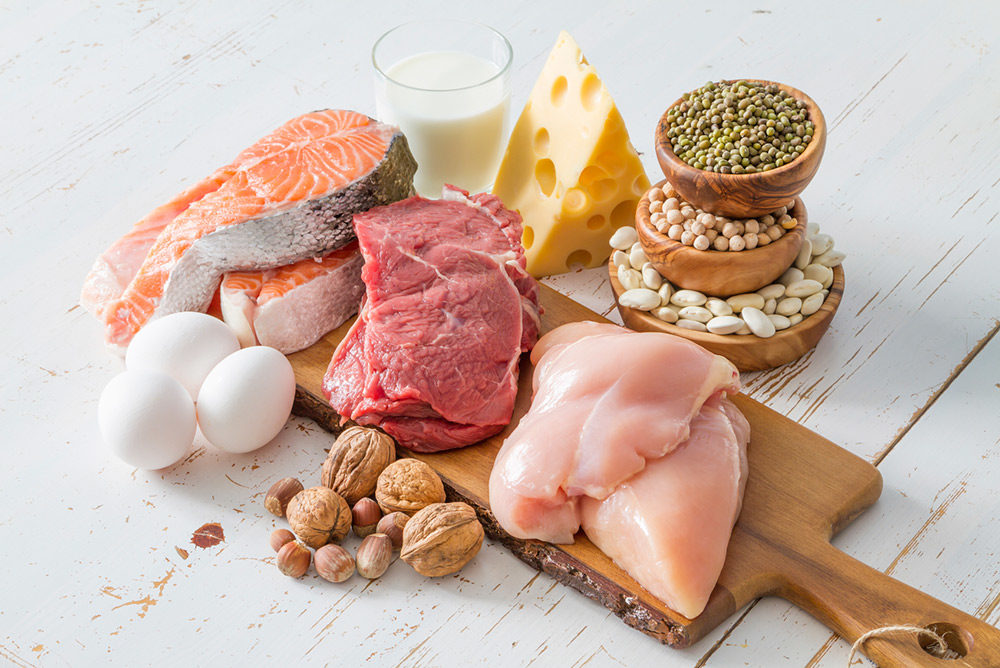
iStock
THE NEED to eat more protein as we age is now a given. The current issues are optimal timing and finding good sources of protein other than animal products (eggs, dairy and fish as well as beef and chicken)—as concern rises about risks for health and, more urgently than ever, for the environment.
—-
Scientists’ “predictions turned out to be completely wrong,” wrote Eugene Linden in a recent New York Times. Compared to the “stately pace” previously envisioned, new estimates double the rates of climate change over the next 80 years—with the earth’s temperature rising 5.4 degrees F; sea levels rising by six feet; and up to 90% of the Northern Hemisphere’s permafrost melting to release dangerous carbon dioxide and methane into the atmosphere.
—-
Growing and producing livestock requires significant natural resources and creates about 14.5% of manmade greenhouse gas emissions.
—-
Health risks of consuming animal protein, depending on an individual’s genetic profile and particular diet, include diabetes, cardiovascular diseases and colorectal cancer, as well as lower life expectancy and disabilities that occur with aging.
—-
With age, protein needs increase because of physiological changes that alter protein utilization, including insulin resistance, impaired digestion and inflammation.
—-
Besides fueling organs and growing skin, protein builds muscles—by stimulating muscle protein synthesis (MPS)—which in turn helps to protect bone mineral content and density and prevent insulin resistance. After exercise, protein helps stimulate muscle recovery and decrease soreness, and alleviate fatigue.
—-
Of 6,800 Americans in a National Health Assessment Study (NHANESIII) who ate high-protein diets (20% of daily calorie intake from protein), those who were 65 and over had lower risk of dying from cancer or diabetes—while these risks increased for participants aged 50 to 64.
—-
Spreading daily protein consumption throughout the day improves absorption, with recommended intake for each meal 25 to 30 grams—about half the requirement for a woman weighing 140 pounds.
—-
Although the formula prescribes .36 to .90 grams of protein per pound of body weight, the amount varies widely among individuals and depends in particular on the quantity and intensity of exercise. Upping total protein consumption doesn’t make much difference because absorption plateaus after a certain point.
—-
To maximize muscle protein synthesis, eating most daily protein in one meal risks insufficient stimulation, but “overnight stimulation” gets a boost from eating a large high-protein meal before sleep.
—-
To benefit the body, dietary protein must be “complete,” containing all of the nine amino acids that are considered “essential” because the body cannot produce them—as opposed to the 11 other “nonessential” amino acids found in the body. Among essential amino acids, for example, tryptophan is vital to the production of serotonin, which helps with mood and sleep.
—-
Animal products all contain “complete protein,” but for plants, that’s only so in buckwheat, quinoa and whole soybeans, found in tofu, edamame and some other soy products.
—-
Among vegetables, fruits and legumes, many lack only one essential amino acid, but eating foods in combination during the same meal can create complete proteins. Perfect complements, for example, are beans, which lack methionine, and rice which, like many plant-based foods, is missing lysine.
—-
While most plants contain low levels of leucine —an important amino acid, along with isoleucine and valine, for maintaining and building muscle strength—the best options if eaten in sufficiently large quantities are dried seaweed, pumpkin seeds and cooked lentils.
—-
Consuming various forms of protein can be a better solution than eliminating animal-based foods entirely, because these provide other essential nutrients, notably B12—and vegetarians have a high risk of deficiency. To complement grains in cereals and breads, for example, add milk or yogurt.
—-
But combining and varying protein sources seems challenging to many, and decreasing the consumption of animal products has a long way to go. To improve health outcomes, according to Britain’s “Eatwell Guide,” consumption of beans and other legumes needs to increase by 85%, while that of red and processed meat needs to fall by 75%.
—-
Anyone needing extra motivation to change their diet might be spurred by daily news reports of worsening wildfires, storms and droughts, and rising oceans inundating coastline towns and cities—and by headlines like those from a recent article in The Guardian: “Animal agriculture is choking the earth and making us sick. We must act now!”
—-
—Mary Carpenter
Every Tuesday, well-being editor Mary Carpenter reports on health news you can use.

Very interesting and important. Thank you.